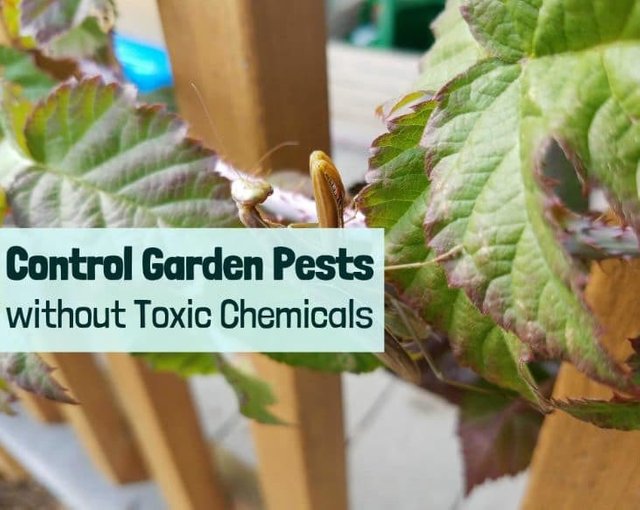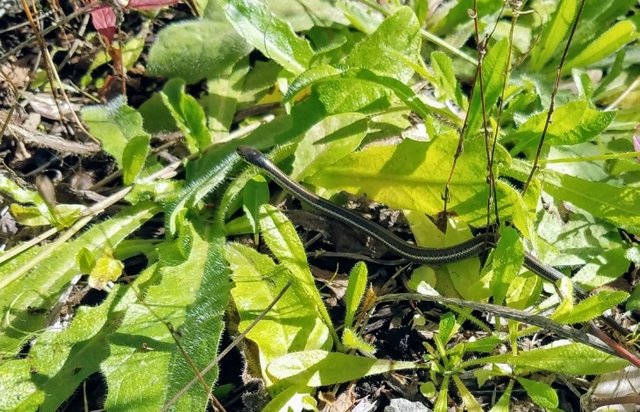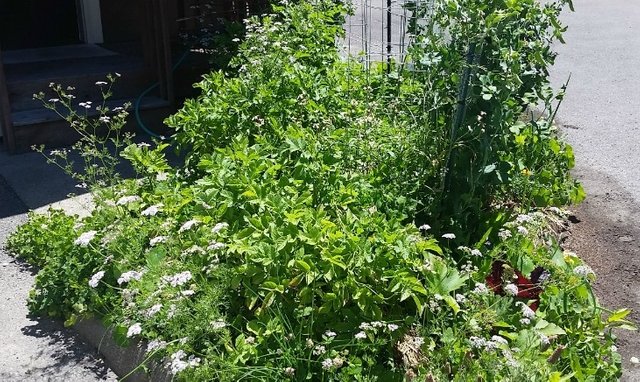Controlling Garden Pests by Working with Nature

What do you do when your garden plants start getting munched? Go for the chemicals? What if I told you there was another way to control garden pests without any of those toxic chemicals? If that sounds great then keep reading so you can build your garden so pests are no longer an issue.
This post is a companion post to a blog post on my site: Control Garden Pests without Toxic Chemicals.
That blog post covers 5 techniques to control garden pests:
- Control garden pests with beneficial insects
- Create habitat for predators of the garden pests
- Plant polycultures – a mix of different plants
- Plant perennials
- Don’t try to eliminate the pests (Yes, you read that right!)
While each of these techniques will benefit your garden the best option is to use them all together to transform your garden into a vibrant space filled with life that is in balance with nature.
Head over to the blog post to get details on all 5 but here is some extra info on 2 of the techniques.
Create habitat for predators of the garden pests

Garter snakes in western WA eat slugs which makes them my best friend!
One reason your garden can get attacked by pests is that your garden does not support the critters that eat those pests. A common example are slugs--they can cause a lot of damage to your leafy greens and other vegetables but luckily there are some predators that will happily eat the slugs.
A common predator are those decent size black ground beetles that you see running around at night. These guys will happily munch on slug eggs helping you to reduce their numbers.
Another example in western WA are garter snakes. These guys love to eat slugs and are a great help on my homestead. Plus I also have a lot of ground beetles to help out.
So how did I make habitat for these critters?
Mulching with wood chips helps a lot. Both garter snakes and the ground beetles (plus many other beneficial critters) love to hide in this type of mulch. While mulch can attract slugs and other pests I found this to be much more common with straw/hay than with wood chips.
All the areas I have put wood chips down have seen an overall decrease in pest issues.
But I also place logs in my beds and make rock piles which give places for garter snakes and the beetles (and other beneficial critters) to hid, overwinter, and warm up in the morning.
Essentially, I'm adding diversity of structure to my garden and planting areas. The result is a lot more critters can find homes which means that pests are kept in balance. They won't be eliminated but they also won't eat everything in sight.
Plant polycultures – a mix of different plants

A small polyculture garden that I grew when I was renting. In 100 square feet this garden produced lettuce, spinach, cilantro, chives, onions, snap peas, potatoes, zucchini, green beans, lavender, daffodils, tulips, arugula, nustrusium, swish chard, white clover and tomatoes. Good luck pests!
I always plant my garden and other growing areas as polycultures. What is polyculture? Essentially, it is when you plant a whole bunch of different plants together. Sometimes this gets a bit crazy (see the above picture!) but even planting just 2 or 3 vegetables together can help.
For example, you could plant broccoli in a row but space them out more and add Swish chard and say peppers in between them. So 1 broccoli -> 1 Swish chard -> 1 pepper -> back to broccoli and repeat the pattern.
I just made up that grouping on the spot but I hope you get the idea. Harvesting is still fairly easy (I'm talking about from a garden not a farm) but pests will have a harder time moving from plant to plant.
Generally, the more plants in your polyculture the more benefit you will get. Try mixing in some flowers too since these will help attract beneficial insects which is another technique! See how you can combine these 5 techniques?
No Pest Garden--is it possible?
These five techniques can all be applied to reduce the pest issues in your garden. But as the 5th technique indicates you won't eliminate all pests. The goal is instead to get to the point where pests just don't really mater.
The above video is an example of what happens if you go all out with these techniques and create a truly natural garden--in this case a forest garden or food forest.
In that system pests just don't cause any major problems. There is no need to spray anything because nature takes care of it.
But even in the kitchen garden you can use these techniques to make pests something you just don't worry about. I never had to deal with pests in that small polyculture garden I shared earlier in this post.
If you are ready to give this a shot (even just try 1 or 2 of these techniques) then don't forget to check out the blog post which goes into a lot more detail about how to make these techniques work on your homestead or in your garden.
Thank you and please leave a comment and upvote if you found this post useful.
Congratulations, your post has been selected to be included in my weekly Sustainability Curation Digest for the Minnow Support Project.
Editor of the The State of Steem SoS Daily News.
Host of The GAME Show on MSP Waves.
Editor of the weekly listing of steem radio shows, podcasts & social broadcasts.
Founder of the A Dollar A Day charitable giving project.
Thank you! :)
Congratulations @wildhomesteading! You have completed the following achievement on the Steem blockchain and have been rewarded with new badge(s) :
Click here to view your Board
If you no longer want to receive notifications, reply to this comment with the word
STOPTo support your work, I also upvoted your post!